Temperature and humidity in rooms for children: standard indicators and methods for their normalization
Every parent, regardless of their level of wealth and employment, can provide a healthy environment for their child. After all, not only the quality of food, clothing, and toys have a beneficial effect on the development of a little person, right?
First of all, this is the optimal temperature and humidity in rooms for children, because this is a great way to avoid illnesses and the purchase of medicines.
In this material we will tell you what the temperature and humidity conditions should be in rooms for children, and also give advice on how to normalize it.
The content of the article:
Sanitary standards and requirements for premises
After numerous studies, checks and confirmation of test results, which were carried out by a group of highly specialized specialists (doctors, teachers, epidemiologists, scientists), optimal temperature and humidity indicators were derived.
And the state has enshrined the mandatory observance of them in kindergartens and schools at the legislative level - SanPiN.
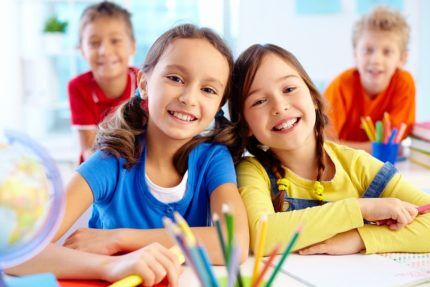
In addition, maintaining the recommended indoor regime helps strengthen the immune system; children are much less likely to get sick.And in case of illness, the immune system copes with viruses without any problems - the disease is less complicated.
Temperature and humidity in kindergarten
In the first years of their lives, it is important for children that the standards are observed in the premises of the kindergarten SanPiNa by humidity and temperature. This is especially true when the seasons change, when heating and air conditioning systems begin to be actively used.
Since children engage in a variety of activities throughout the day, each room has its own temperature regime.
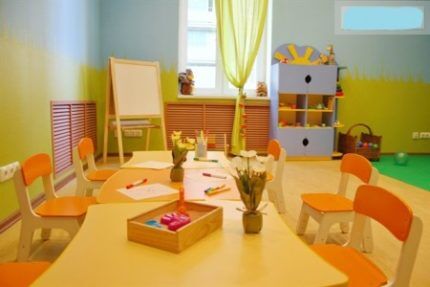
In accordance with SanPiNom The air temperature in the garden should be:
- 22-24 °C - nursery groups;
- 21-23 °C - junior and senior groups;
- 19-20 °C - bedrooms;
- 22-24 °C - toilet in the nursery;
- 19-20 °C - senior group toilets;
- 22-24 °C - medical office;
- 19-20 °C - halls for active activities;
- more than 12 °C - walking veranda;
- from 29 °C - swimming pool;
- 25-26 °C - locker room and showers;
- from 15 °C - heated inter-hull transitions.
This temperature difference is explained by the fact that for each type of children’s activity, the institution has a specially designed room/hall. The child sleeps in the bedroom and under a blanket - he should not be cold/hot.
Physical education classes take place in the gym, where the temperature is slightly lower than in the playroom, since the classes are active and children should not sweat during the process. In the gaming room the temperature is slightly higher than in the gym, because...Quiet activities and games also take place there.
For all nursery premises, the standards provide for a temperature higher than for older children.
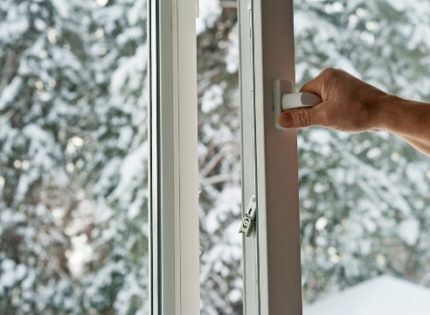
These recommendations are adjusted by garden workers depending on weather conditions. Children should not be in a room that is ventilated.
Humidity in kindergarten should be in the range of 40-60%. This value is regulated by ventilation:
- A short-term decrease in room temperature by 2-4 °C is considered normal;
- do not ventilate through the toilet;
- bedrooms are ventilated before daytime sleep;
- In winter, the windows are tightly closed half an hour before the children wake up.
Failure to comply with these standards can have a detrimental effect on the well-being and activity of children. As a rule, frequent colds in a group can be caused by neglect of prescriptions SanPiNa preschool workers.
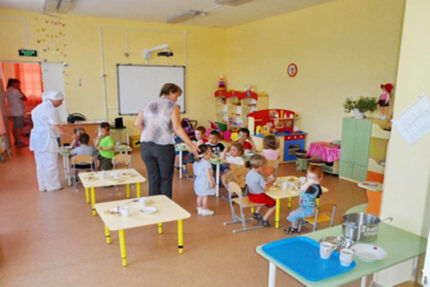
Violation of the temperature regime and failure to maintain the required humidity provokes the following diseases in preschoolers:
- ARVI;
- growth of adenoids;
- persistent allergies and asthma;
- dermatitis.
If children in a group often get sick or there is reasonable suspicion of non-compliance with standards, parents can initiate an inspection of the kindergarten, and also contact the district education department or even the prosecutor’s office.
Temperature and humidity at school
Requirements SanPiNa 2.4.2.2821-10 are no less strict regarding the organization of an optimal microclimate for students by the school institution.
And, although they are not focused on ranking temperature and humidity indicators by age/class, they take into account the following factors:
- The upper and lower temperature thresholds for classrooms and classrooms are 18-24 °C.
- The temperature in the halls intended for conducting classes related to vigorous physical activity is 17-20 °C.
- The minimum temperature in the pool and showers is from 25 °C.
In a school institution, it is especially important to adhere to performance standards SNIP according to the balance of heat and humidity. After all, within the same building every day a large number of children gather who actively consume oxygen, so it is impossible to do without regular ventilation.
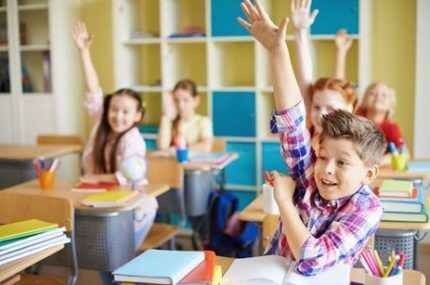
Maintaining optimal temperature throughout the entire day of classes creates favorable conditions for children’s learning activities. They are not hot during physical education classes and not cold during the 45-minute lesson in a sitting position. Such temperatures can be safely called comfortable for a child.
Regulatory, optimal humidity The air quality in school is the same as in kindergarten.
To maintain it in the required parameters, regular ventilation is carried out:
- all classrooms - before and after classes;
- classrooms - during breaks;
- school corridors - while schoolchildren are in class.
The duration of each ventilation is adjusted depending on the season and the outside air temperature. A short-term decrease in temperature should not exceed 2-4 °C.
Sometimes the windows in classrooms are closed during the lesson and a large number of children - 12-30 schoolchildren - find themselves in a closed air space. This is fraught for them with loss of ability to work and decreased mental activity.
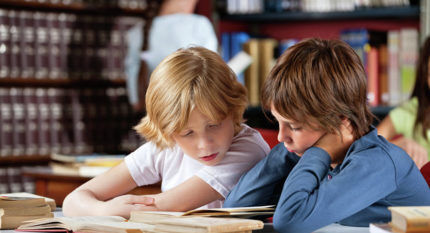
Therefore, even short-term ventilation during breaks is important, because the air in the classroom is enriched with oxygen. Especially in old buildings schools with problematic ventilation.
Supervisory functions over the maintenance of temperature and humidity conditions in schools are carried out by local authorities Rospotrebnadzor. Employees of this organization conduct scheduled and unscheduled inspections (in case of suspected violations, complaints) of children's institutions.
For example, if the temperature at school is not maintained, a child may faint and be seriously injured, or develop a lifelong disease such as asthma. Therefore, even suspicions that employees of a child care institution are violating the rules may be sufficient grounds for an unscheduled inspection.
If violations are detected, the following binding decisions may be made:
- An order to eliminate technical violations that negatively affect the temperature and humidity in the premises. This could be breakdowns of pipes in water supply systems, heating systems, etc.
- For negligence, workers can be punished in an amount equivalent to 100-300 minimum wages.
- Based on the act of checking and identifying violations, a criminal case may be initiated for causing moderate or severe harm to the health of a child, which is fraught with imprisonment for up to 5 years.
Parents can privately or jointly write a corresponding letter to Rospotrebnadzor or leave a statement/complaint/claim on the organization’s official website. You can also contact supra-departmental authorities on the site State services - The Ministry of Education, the regional office of the Commissioner for Children's Rights or the prosecutor's office.

You should not be afraid of disturbing someone’s peace or of any kind of persecution towards your child from the administration of a kindergarten or school. These problems are much easier to deal with than acquired asthma or chronic ENT diseases.
Temperature and humidity conditions at home
One of the reasons for frequent morbidity in children of all ages is non-compliance with the temperature regime and critical humidity levels in the apartment. More often this is caused by parents’ ignorance of what standards need to be followed and how to check them.
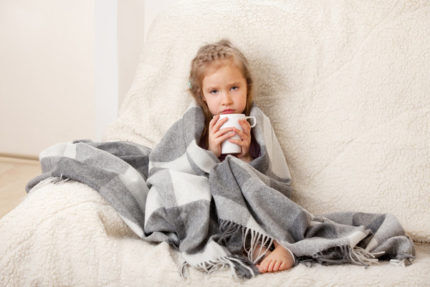
Sometimes parents are simply afraid of harming their child, leaving everything as it is and sincerely wondering why the child is apathetic, eats poorly or is constantly sick.
To ensure a comfortable temperature and optimal air humidity in the apartment for a child, you can focus on the prescribed SNIPs standards.
If flowers dry out in the house, especially during the heating season, this indicates a low level of humidity in the apartment. Urgent action should be taken and raise it to at least 50%, while the norm for a child is 40-60%.
In common rooms, a comfortable temperature for a person is 21-24 °C; in a sleeping room, a lower temperature can be maintained - 19-21 °C. Then the child will sleep more soundly and breathe easier.
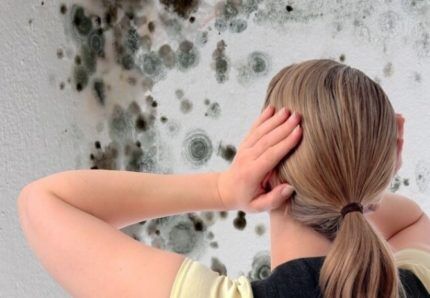
Temperature and humidity in the room must be balanced. Since if both indicators are high, then the microclimate in the apartment will resemble a tropical one, which is also not useful for either adults or children.
After all, such an environment promotes the reproduction and spread of pathogenic microbes and microorganisms. The ideal ratio is achieved at a temperature of 22-24 ° C and humidity - 50-60%.
Room for newborns
Since a child at birth finds himself in a new environment, the parents’ task is to help him adapt and create optimally comfortable and healthy conditions for him.
On the one hand, a newborn person is a very weak creature that needs to be protected, but on the other hand, it is unusually strong. We must not forget that his metabolism is accelerated, all body systems work in enhanced mode.
22 °C is the optimal temperature for a child’s room up to 6 months old. After six months it can be reduced to 19-21 °C. This temperature is favorable for the development of the baby.
There is no need to be afraid that your baby may be cold. He's comfortable. When you try to wrap him up, the child will try to turn around, and if he doesn’t succeed, he will sweat profusely. This can be fraught with dehydration of the baby’s body, increasing the risk of catching a cold even from a small draft.
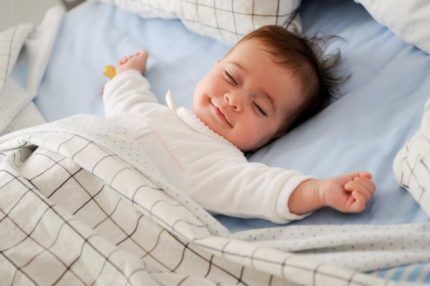
Pediatricians also recommend regularly ventilating an apartment with a newborn. Of course, this will not be the right decision at any time and not for any climate.
But if you adhere to the standards and monitor the air humidity in an apartment with a newborn, you can create a microclimate in which both adults and children will feel as comfortable as possible.
Instruments for measuring temperature and humidity
To measure the temperature in any room of the apartment, you can use a regular thermometer. It can be mechanical or electronic.
Such devices, in a bright colorful design, can be purchased in pharmacies, specialized stores, and children's departments. The thermometer is installed at a neutral distance from heating devices and radiators.It should not be exposed to direct sunlight - this may affect the accuracy of the readings.
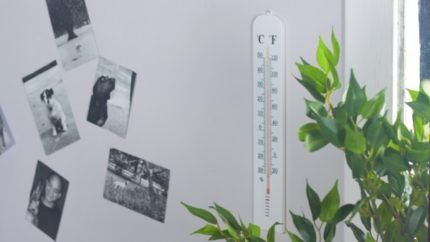
To measure humidity use hygrometer. This is a small compact device that subtly responds to changes in humidity in the room. You can buy a hygrometer at a specialized measuring equipment store.
If you don’t see one nearby, you can find electronic clocks in any store that show not only time, but also temperature and humidity.
Of course, such functions in watches have some error, but it does not reach critical sizes. In any case, with their help you can track significant deviations from the required parameters and take timely measures to correct them. The main thing in control is to notice the presence of problems in time.
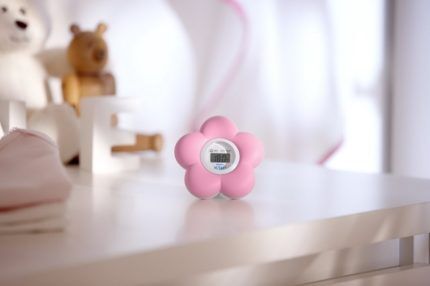
Failure to maintain the balance of temperature and humidity in children's rooms can affect their health. Thus, a decrease in the child’s activity, problems with concentration, insomnia, lethargy, and apathy can become the first symptoms of an improper indoor microclimate.
Too dry indoor air leads to decreased immunity, flaking of the skin, allergies and asthma.
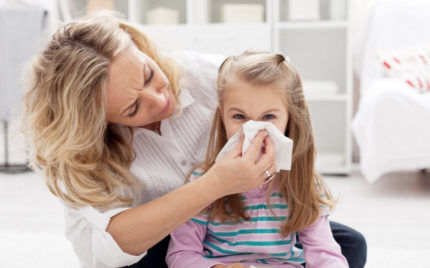
Low humidity causes drying of the mucous membranes and skin and makes the child more vulnerable to infectious diseases.
Methods for normalizing temperature and humidity
The easiest way to correct temperature and humidity imbalances is with the help of household appliances. Children's doctors recommend using air conditioners to regulate air temperature in apartments. Only they should not work on an ongoing basis, but in one-time switching mode.
In addition, air conditioners should be installed in adjacent or adjacent rooms to the nursery. This will ensure normal air circulation and minimize the risk of blowing out a hot child.
And to regulate the humidity level you can use humidifiers/air dryers.
Since 2014, studies have been conducted in the West that indicate harm from these devices for human health. But strict adherence to the manufacturer’s recommendations regarding the use and maintenance of climate control equipment will minimize the risk of possible harm.
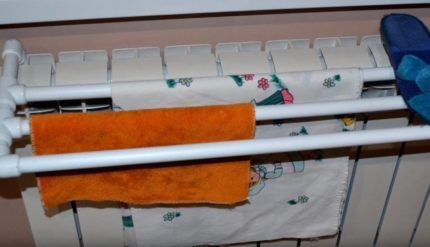
There are also other methods, with the help of which you can quite easily normalize the heat and humidity in the apartment:
- a wet towel on the heating radiator will increase the humidity;
- an open aquarium with fish in the nursery;
- frequent wet cleaning;
- frequent ventilation.
Following these recommendations will help maintain an optimal indoor microclimate.
Conclusions and useful video on the topic
Humidifier made from a plastic milk bottle:
5 ways to increase humidity in a nursery without a humidifier:
As you can see, it is not so difficult to monitor and regulate the level of temperature and humidity in the room. Cool air develops the child's ability to resist colds. But too high a room temperature and low humidity, on the contrary, contribute to frequent colds and the appearance of chronic diseases.
Do you maintain the temperature and humidity in the nursery at the right level? Please tell our readers what methods you use to increase indoor humidity. Leave your comments in the block below.



